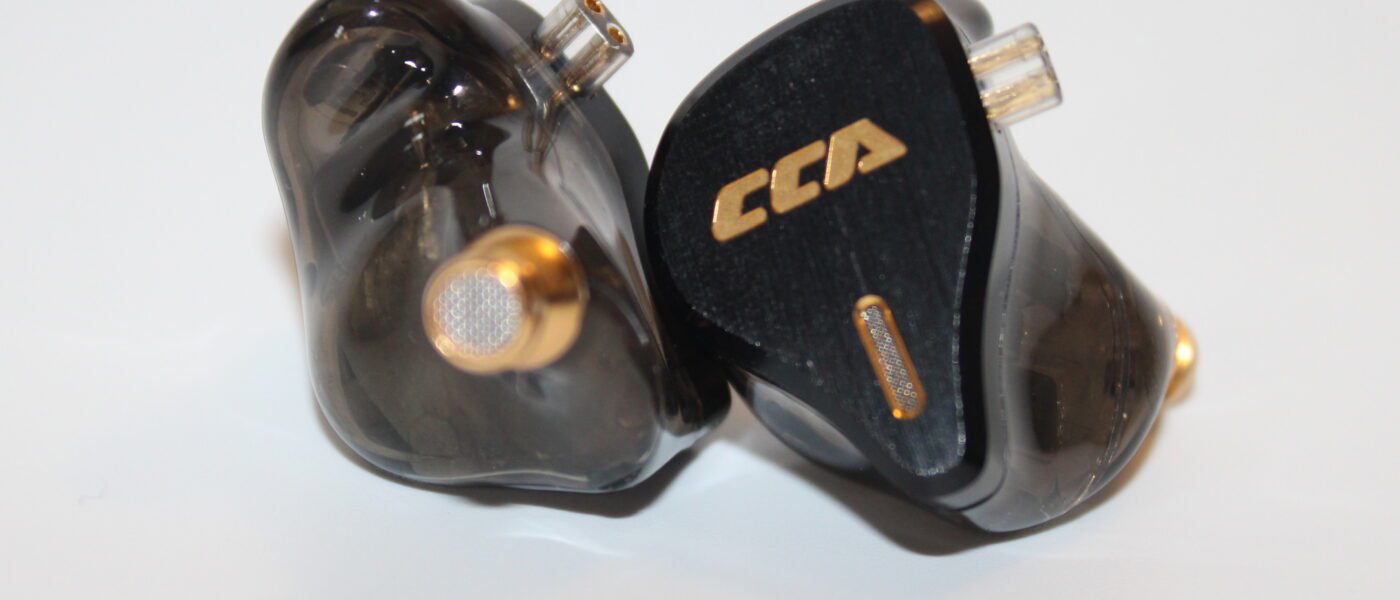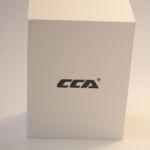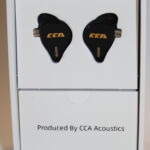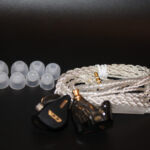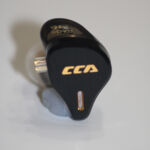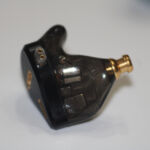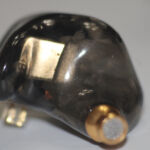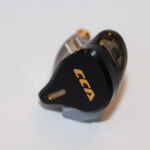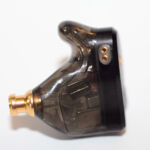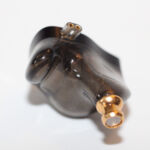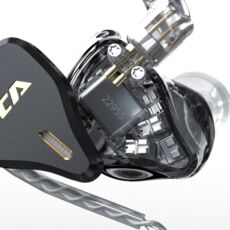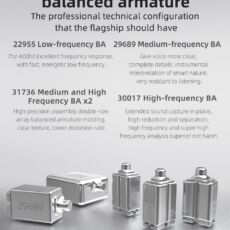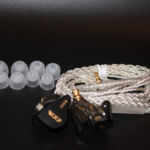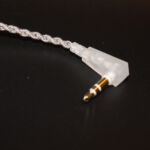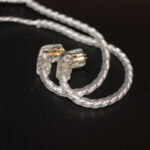CCA CS16
disclaimer: I was approached by CVJ about reviewing the latest crop of CCA products and agreed to review the Cs16 and CKX as I had not had the opportunity to try either yet. CCA (Clear Concept Audio) of course is the sister brand of Knowledge Zenith and often parallels the KZ releases with slightly different versions of their own. In the case of these two, neither has a direct counterpart in the KZ line although both do have models with similar configurations on the KZ side. I have no financial interest in CCA, KZ, or any of their vendors and was not provided any remuneration for this review. Interestingly, CCA doesn’t seem to have a website or their own Facebook page and information regarding CCA models usually has to be found from their vendor’s. For more information about CCA and to purchase your Cs16, see their Amazon store.
Unboxing / Packaging:
Those who own pretty much any CCA product will know the formula here. White box, CCA on front, specs on sticker on side, earpieces in foam surround and box with rest of kit resting in the lower half the space. The Cs16 stays with the tried and true packaging and the kit is also pretty standard with earpieces, cable, 4 sets of tips, and manual in the box. Tips include three (3) pairs of standard shaped but fairly shallow and wide silicones in small, medium and large and one medium pair of tips that is also of silicone but of a much more square shape that allows for a deeper fit. No carry case or even cable tie is provided which is a bit of a let down as most others at this pricepoint now offer at least those two amenities.
Build/Fit:
The Cs16 is a 3 piece shell with an aluminum face plate, a smoked resin inner shell, and a brass nozzle. These are done in the now standard semi-custom shape and are on the large side as one might expect with having 8 drivers in each earpiece. The Faceplate contains a single large vertical vent immediately in front of the nozzle that allows for pressure equalization when worn, but prevents the Cs16 from being as isolating as it might be with a smaller vent. Nozzles have a forward rake and sit mostly in front of the body of the earpiece as well which further limits isolation. Comfort was good for me, but may be problematic for those with smaller ears as they are fairly large. Weight was not an issue as they are light to begin with and the ear-hooks do a good job of spreading what weight is there.
Internals:
The CS16 is an all balanced armature model that uses a total of 5 driver packages per earpiece. Lows and lower-mids are each handled by a single armature, the 22955 and 29689 models respectively. This accounts for 2 of the 8 per side. The remaining drivers are all dual packages with two dual driver 31736 packages handling upper-mids and lower treble, and a single dual driver 30017 package handling the high end. All the drivers appear to be made either in house at CCA/KZ or produced by Bellsing. Nominal impedance is listed as 18Ω with a sensitivity of 105 dB/mW which should make the Cs16 fairly easy to drive. I found the Cs16 easy to drive from a tablet or phone but it did scale fairly well and particularly benefits from improvement in dac as detail retrieval is quite good when the source is capable.
Cable:
I have written up basically the same cable probably nearly 50 times now as most of the budget models seem to use either KZ made cables or something very similar in design and construction. This one is slightly different, but honestly probably not enough to justify speaking to it more than in passing. It is listed as a 25core per strand, 4 strand cable using silver plated oxygen free copper in a clear casing. Once we get past the color change from brown to clear on the casing and the silver plating of the strands, not much has changed. The splitter still sits about navel high when worn and is way too low, the 90º jack is still the same heavy plastic housing as earlier models, and the clear connectors on the hooded bi-pin connectors are still difficult to identify right and left as the markings are clear. Is the cable usable, certainly, does it seem fitting for a flagship model, maybe not so much.
Sound:
Bass:
As one might expect from an all BA arrangment, sub-bass is not the Cs16 strong suit, in fact it is probably its weakest. Not necessarily because of lack of impact, although that can be an issue, but because the Cs16 has a tendency to distort pretty heavily when fed a steady diet of frequencies below 50Hz or so. It took me a good while to figure out exactly what as going on here as on paper the Cs16 looks really good and at times it sounded really good, but then I’d listen to something where the low end was really murky and lacked detail and the mids were largely obscured by mid-bass which is not something I expected from a BA model as usually bleed is pretty much non-existent. Breaking out a parametric equalizer and backing the lows (10Hz-60Hz) -4dB did the trick and while the sub-bass presence was lessened, so was the mud and obstruction that had been overshadowing everything else. For tracks that do not use a lot of electronic sub-bass, the Cs16 does brilliantly, for EDM and genre’s that inject a lot of really low tones, this model is probably not the best option (See CKX review for that). If instead like me, you listen to a lot of genres that don’t rely on electronic bass, the sub-bass is quite good in both detail and quantity. Mid-bass is well textured with good dynamics and slam when called upon. Overall, don’t expect the slam and rumble of a dynamic driver and don’t feed these heavy sub-bass tracks and they do fine. Bass Tracks are best left off the playlist here.
Mids:
This is one of those cases where the graph does not do the experience justice as mids are well voiced and do not feel recessed although the frequency response graph clearly shows a drop at 1kHz. Lower mids have good note weight and male vocals are rich and full. Lower vocals do stand slightly behind the higher voices due to the upper-mid push, but not so much so as to seem recessed or unnatural. Strings are well voiced too with the energy needed to deliver lifelike performance without a ton of excess contributing to fatigue or a harsh edge. Overall, the Cs16 should be thought of as a mid-centric in-ear with bright leanings. I found the Cs16 to be particularly good for string quartet pieces where the mids are on full display and the previously mentioned sub-bass issue is a non-event.
Treble:
After the upper-mid push, the treble drops back equally quickly which is a tuning not commonly see as often the lower-treble sits on the same plane with the upper-mids. Here the lower treble quickly falls away before plateau at about -5dB below the upper-mids. This makes for a very polite experience and is part of why I list the Cs16 as mid-centric. The treble is roughly in line with the lower-mids and mid-bass and creates a balance where what stands out is the mids between the two. Snare rattle is good with sharp edges and detail and cymbals have a nice crash to them if a touch lite in energy. Extension is good with final roll-off somewhere above the range of my hearing (roughly 14kHz).
Soundstage / Imaging:
Soundstage on the Cs16 is moderate with more width than depth and some height as well. Best definition is small theater as it isn’t sitting in row 1 intimate, but not cavernous or holographic either. Seating the orchestra is straight forward as layering is quite good and instrument separation is above average as well. Imaging is a bit quirky as most of the time it is quite good but occasionally something seems to jump rather than moving fluidly. I won’t dwell on the sub-bass issue but it does rear its head at times although compression really is not an issue and if tracks minimize sub-bass the Cs16 is quite nimble and can handle busy tracks very well indeed.
Thoughts / Conclusion:
I had a tough time liking the Cs16 with either the large or medium tips as I had a lot of fitment issues that kept it from sealing and I kept losing a lot of bass impact as a result. That changed when I switched the squared tips and then to foams as both of those gave a proper seal and allowed for a good test listen. I always try and listen using the provided tips but in this case none fit well so know going in that tip rolling may be required to get these to work properly. I also had to spend some time to figure out why the bass went from really good to really bad when I hit next track on my dap. Once that was sorted out, what remains is a good iem in some situations, but a poor choice in others. The 22955 driver that handles the lowest frequencies needs a bit of work to really handle elevated sub-bass as it tends to distort heavily when fed a lot of high volume sub-50Hz material. Luckily for me, that is a very small portion of my listening and the majority of what I listen to puts more value on mids where the Cs16 really shines. The Cs16 is going to be a very divisive model as those of us that listen to more classical, jazz, and strings will likely find it the best CCA to date. Those with tastes that tend to EDM, dance, and other sub-bass heavy genre won’t find it nearly as enticing.
-
Bass - 5/105/10
-
Mids - 8/108/10
-
Treble - 7/107/10
-
Soundstage - 7/107/10
-
Imaging - 6/106/10
Summary
Pros: great tuning for strings, comfortable fit, mids really shine
Cons: Sub-bass distortion, large size, poor kit

